From tiling, taps and sanitaryware; to showers, lighting and accessories, this month we are bringing you a special design guide packed with top tips to help you take your bathroom designs to the next level. Here are some of the highlights…
Tiles & wall finishes – preparing the canvas
- Should you use tiles, wallpaper, panelling, or microcement?
- How you can use tiling to make the bathroom look more expensive
- Adding the wow factor with niches
The walls in any space should be considered as the blank canvas on which everything else is built, so what is going on them should be carefully considered at the start of a project and not a design afterthought.
We recommend using a combination of tiles and wall panelling, microcement, or even waterproof wallpaper as each of these have their own practical benefits.
Waterproof wall panelling offers a practical alternative to tiles in the showering area as they are much easier to keep clean and come in a range of designs and colours. This allows you to make a design statement or feature of the showering space.
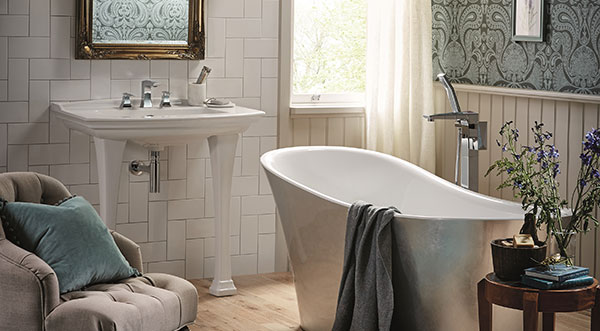
Microcement offers a seamless, fuss-free look for minimalist bathrooms and can also be used on the floor. Waterproof wallpaper comes in lots of great designs and is not offered by many bathroom retailers, so selling this might give you the edge over your competition.
Where tiles are used, consider opting for larger format versions or perhaps a contrasting coloured grout. This will add interest and darker grout won’t show up any stains, making bathroom maintenance easier for the customer.
Another way to add interest and stylish storage is with niches. Consider using different colours and lighting within the niches as an extra ‘wow’ factor flourish.
If you have a large space to work with, you could break up the bathroom with a freestanding feature wall, complete with a niche cabinet fronted with a sliding mirrored door and his and hers matching basins and vanity units. This can be a great way of separating the showering area from the WC.
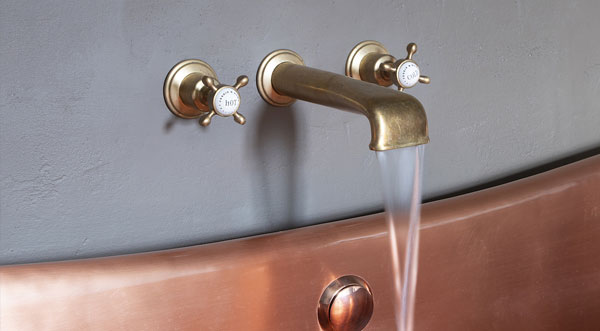
Brassware & sanitaryware – choosing the right finish
- A guide to mixing and matching to max effect
- The benefits of wall-hung sanitaryware and sit-on basins
With brass, matt black, pewter, gunmetal and chrome brassware alongside sanitaryware that is now available in hundreds of colours, the choice can be overwhelming for consumers.
So, a nice way to use these different finishes is to mix them up. Try and stick to a maximum of three finishes throughout the scheme – across the sanitaryware, brassware and shower space or bath – to ensure the design remains cohesive and tidy. Any more than three very carefully chosen finishes could lead to something which looks messy and thrown together.
Space is usually at a premium in the bathroom so opt for wall-hung sanitaryware, as this will make the room feel bigger by freeing up floor space. In addition, wall-hung options offer greater accessibility, which will be helpful for any customers who might have mobility issues.
Think about opting for a statement sit-on basin in a bright colour or unusual finish. These are great because they allow the designer the freedom to make bold choices with the understanding that the basin could be changed fairly easily at a later date should they choose.
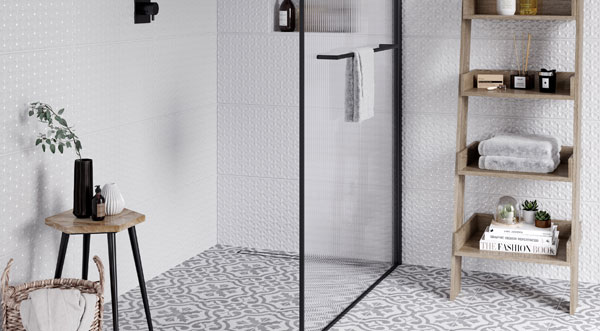
Furniture & storage – maximising space effectively
- How to avoid using too much cabinetry
- Savvy solutions – under-bath storage
Good storage is the cornerstone of any top quality design, but too much cabinetry can cause the space to feel claustrophobic.
Currently, modular, mix and match, textured and wall-hung are all key themes in bathroom furniture, while traditional shaker painted styles are also back in vogue. Like wall-hung sanitaryware, wall-hung furniture helps to create the illusion of more space.
In addition to a quality wall-hung vanity unit, consider adding under-bath storage. This can be open or concealed and is relatively easy to achieve. This will also utilise space that would otherwise be wasted.
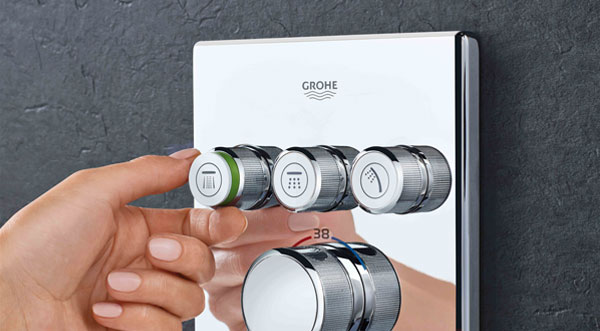
Showering – getting the right mix
- Ensuring you know what will work
- Why you should opt for a concealed system
- Future-proofing
When planning a showering space make sure you consider the amount of water storage in the property and the type of water system fitted. Designers will need to know whether the shower head is compatible with the water system or how long the shower might last before the tank runs out, and while this wouldn’t usually be a problem in newer builds, it could cause an issue in older properties or high rise apartment blocks. A pressure booster might be necessary.
Your customer might have their heart set on a large rainfall shower head but this might not be practical or possible. Having all the information will mean you can manage the customer’s expectations and discuss all the possible alternatives to ensure they are happy with whatever is specified.
Opt for a concealed shower valve system, if possible. This looks neater and will give you greater design flexibility as you will have more choice when it comes to wall plates and handle options, as well as the placement of the valve, controls and showerhead. However, remember that concealed shower valves typically need a recess depth of around 100mm. If you don’t have this space available, you could build in a stud wall, perhaps with a niche for toiletries.
Finally, consider future-proofing the shower space with a flush-to-floor shower tray and a frameless enclosure or sleek shower panel. Textured panels in reeded glass have a retro vibe and are popular right now. These look great and offer greater privacy than traditional options.
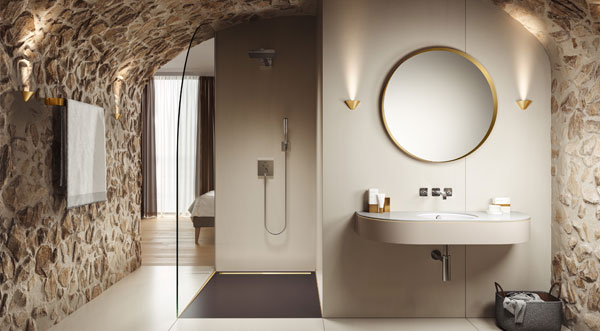
Lighting – getting the balance right
- Combining statement and task
- Picking out focal points
- The benefits of smart illuminated mirrors
Lighting should be carefully planned at the start of the project. Think about using a combination of statement and task lighting and perhaps some integrated cabinet lighting installed under wall-hung units for atmosphere.
A statement chandelier, a grouping of pendants, or structural industrial-inspired lights above a bath can look great, and might help guide the direction of the whole scheme. Alternatively, consider installing wall lights either side of a statement mirror.
Smart lighting and smart illuminated mirrors or mirror cabinets will also continue to grow in popularity beyond 2020. These come packed with useful features such as demisters, touch and motion controls, and Bluetooth connectivity. These are also worth considering depending on the look the customer is after.
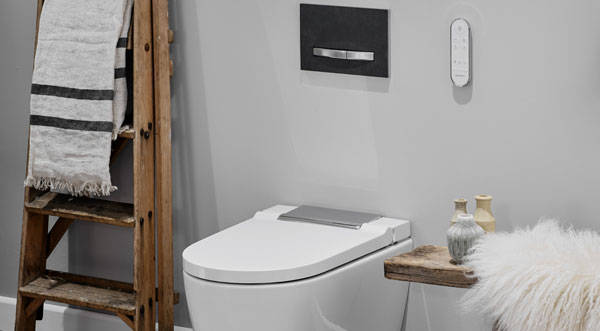
Accessories – providing the finishing touch
- Personalising the space
- The benefits of perfectly placed accessories
Like tiles, accessories can help sell bathroom displays in the showroom – if properly utilised. Some quality accessories perfectly placed can make a bathroom look significantly more expensive and luxurious.
Accessories offer an opportunity for your customer to really personalise their space, and if you sell them, consumers will have another reason to visit your store, even if they’re not looking to buy a bathroom.
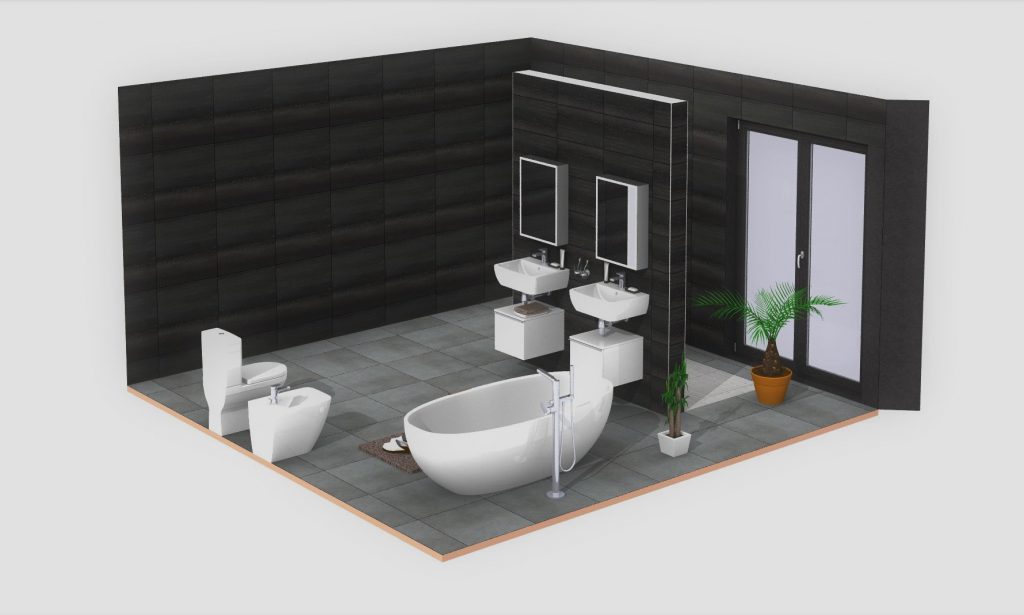
Visualising in CAD – visual communication most critical
Perhaps most important in the design process is how you communicate with the customer and how they can convey their ideas to you. It’s important they know what is going on in your head and that they are happy at every stage.
CAD has a critical role in facilitating this communication as you can trial different looks and styles with the client and help them properly visualise how your design will look in their space.
Using a high-quality CAD package you can pick from hundreds of different products and render mock ups into photo-realistic 3D renders in minutes. Using this tool the customer can explore all the options available to them, some of which they may have never considered or even thought possible.
Creating a CAD design can also be a highly collaborative process, and collaboration with the client will ensure they feel valued and that they’ve had real input, so they’ll cherish their new bathroom all the more.
